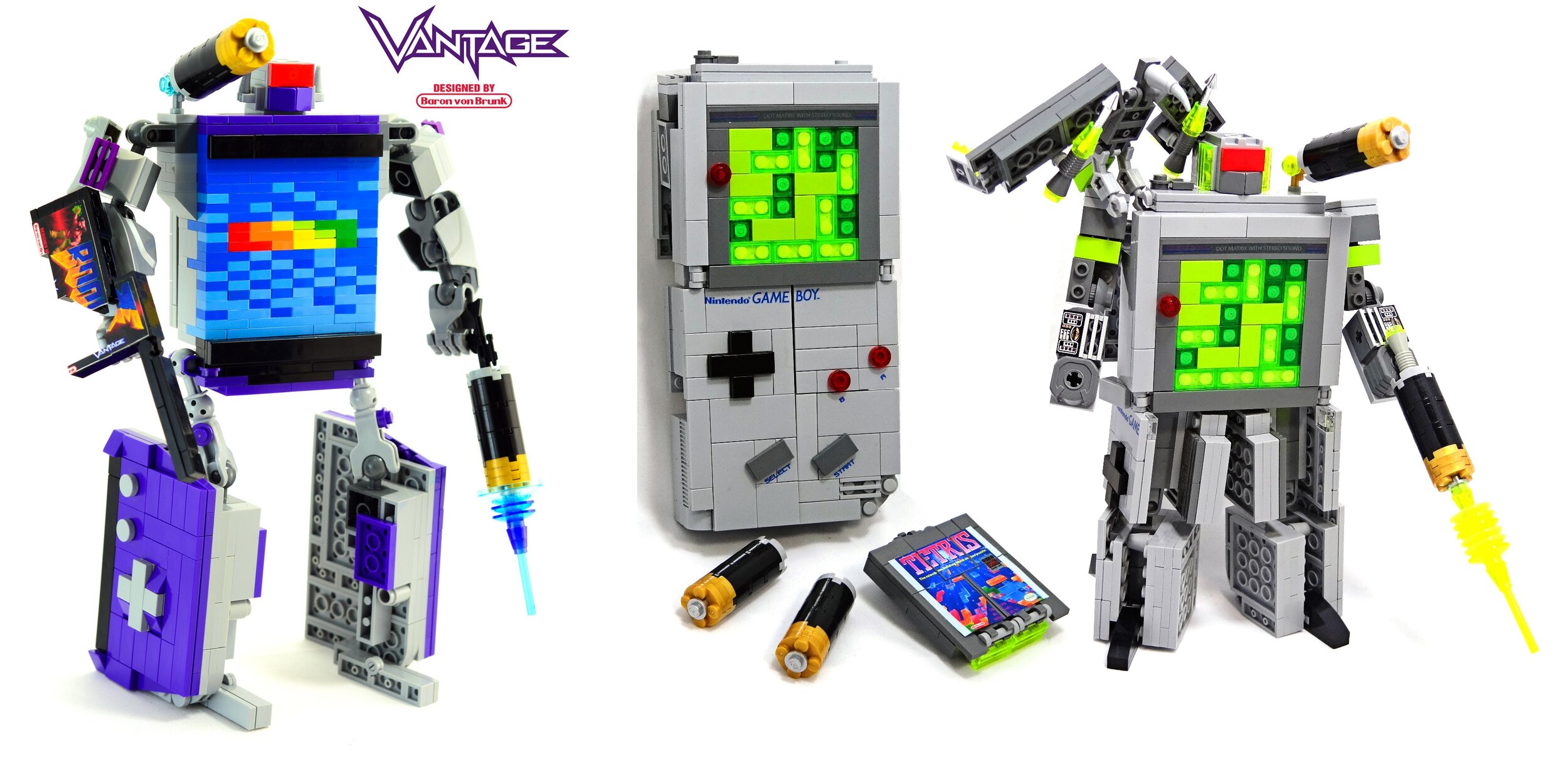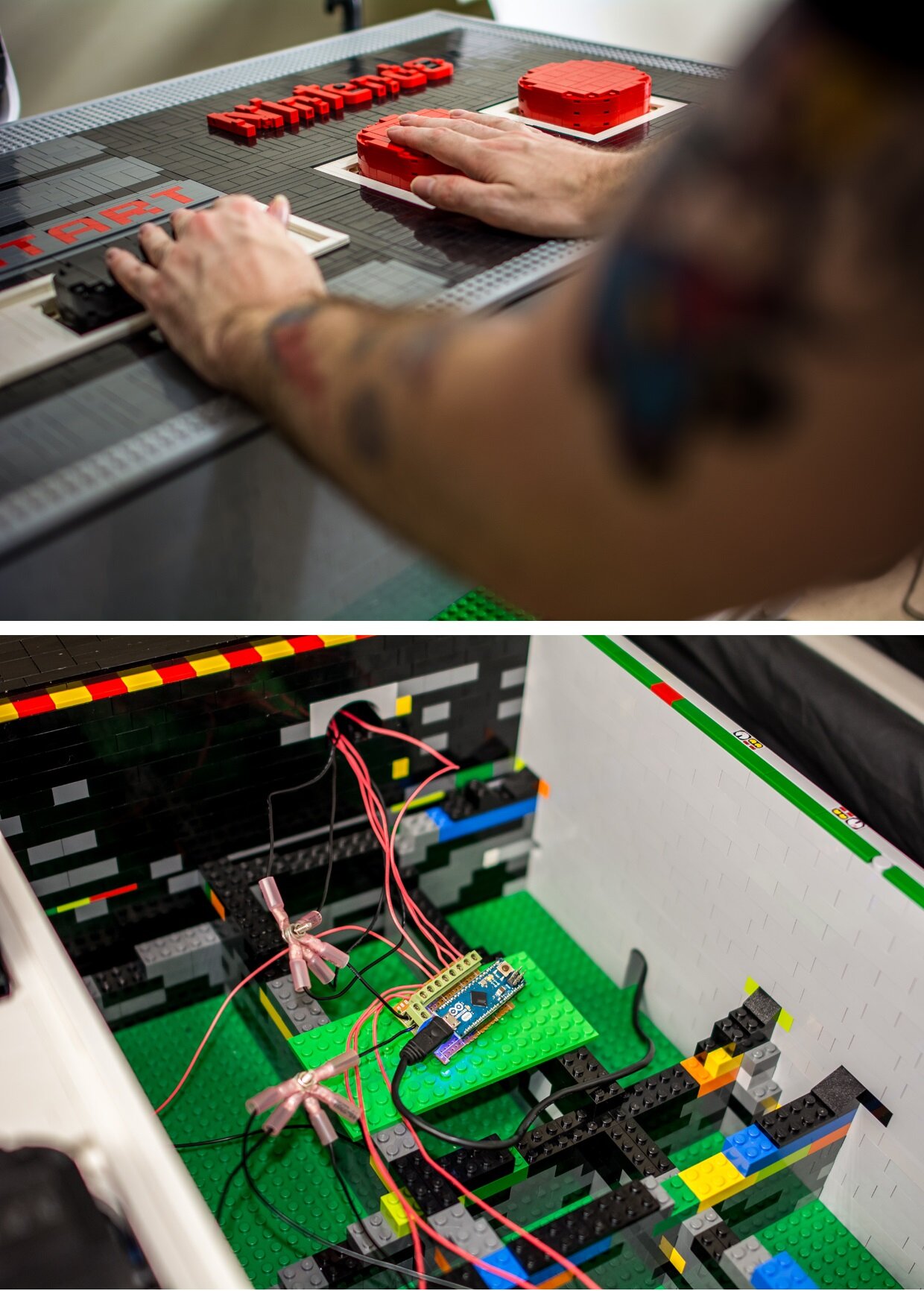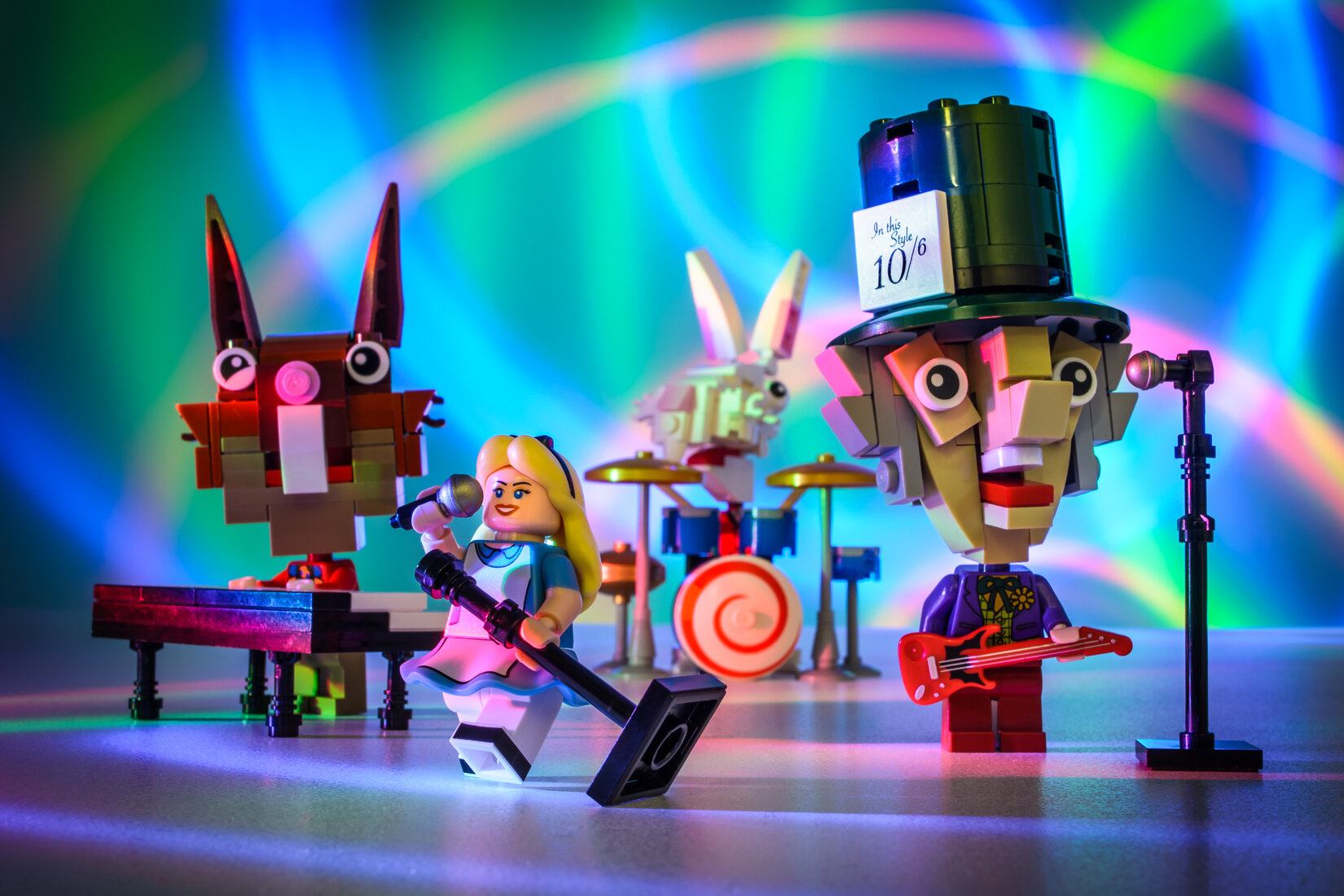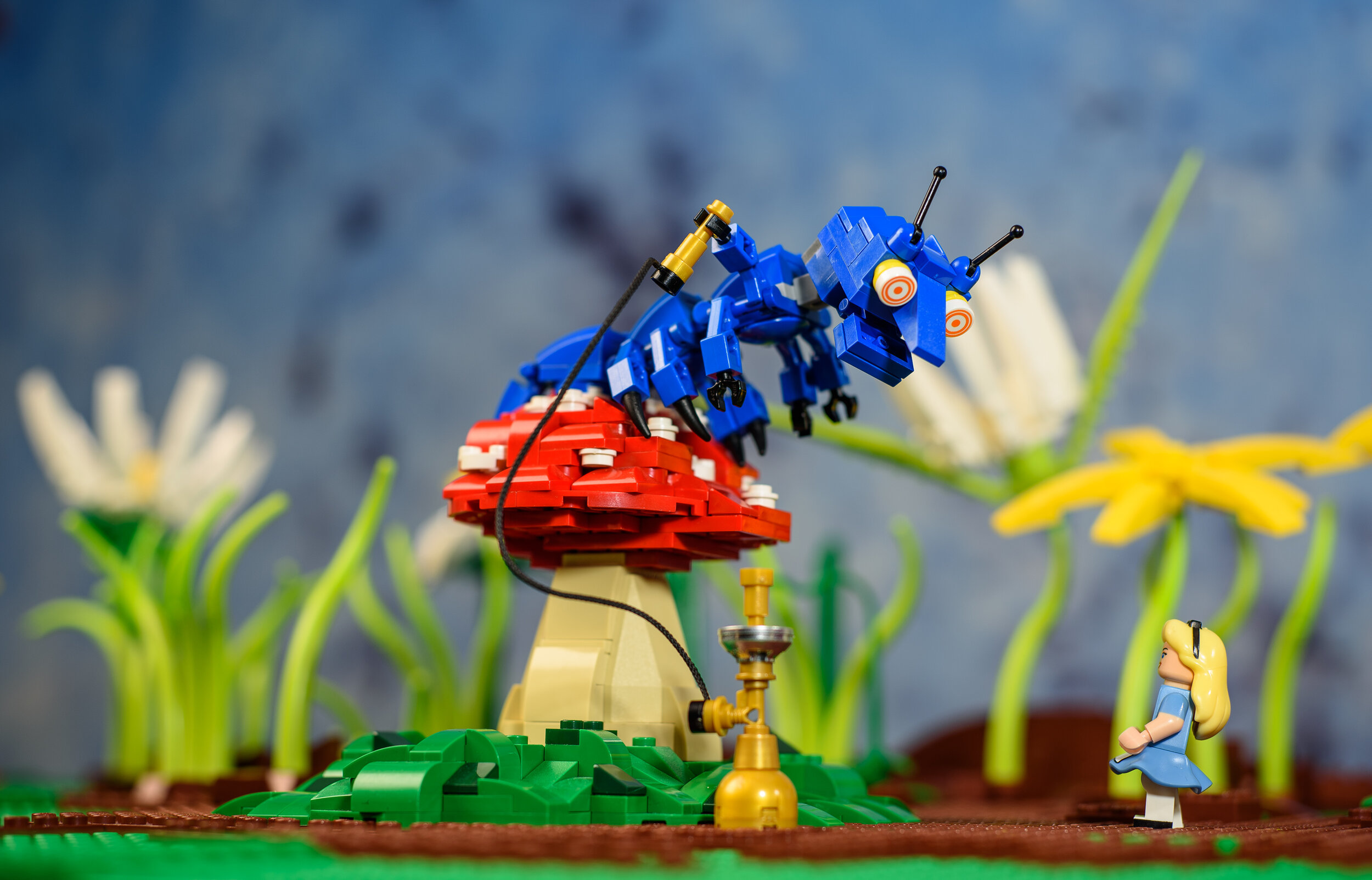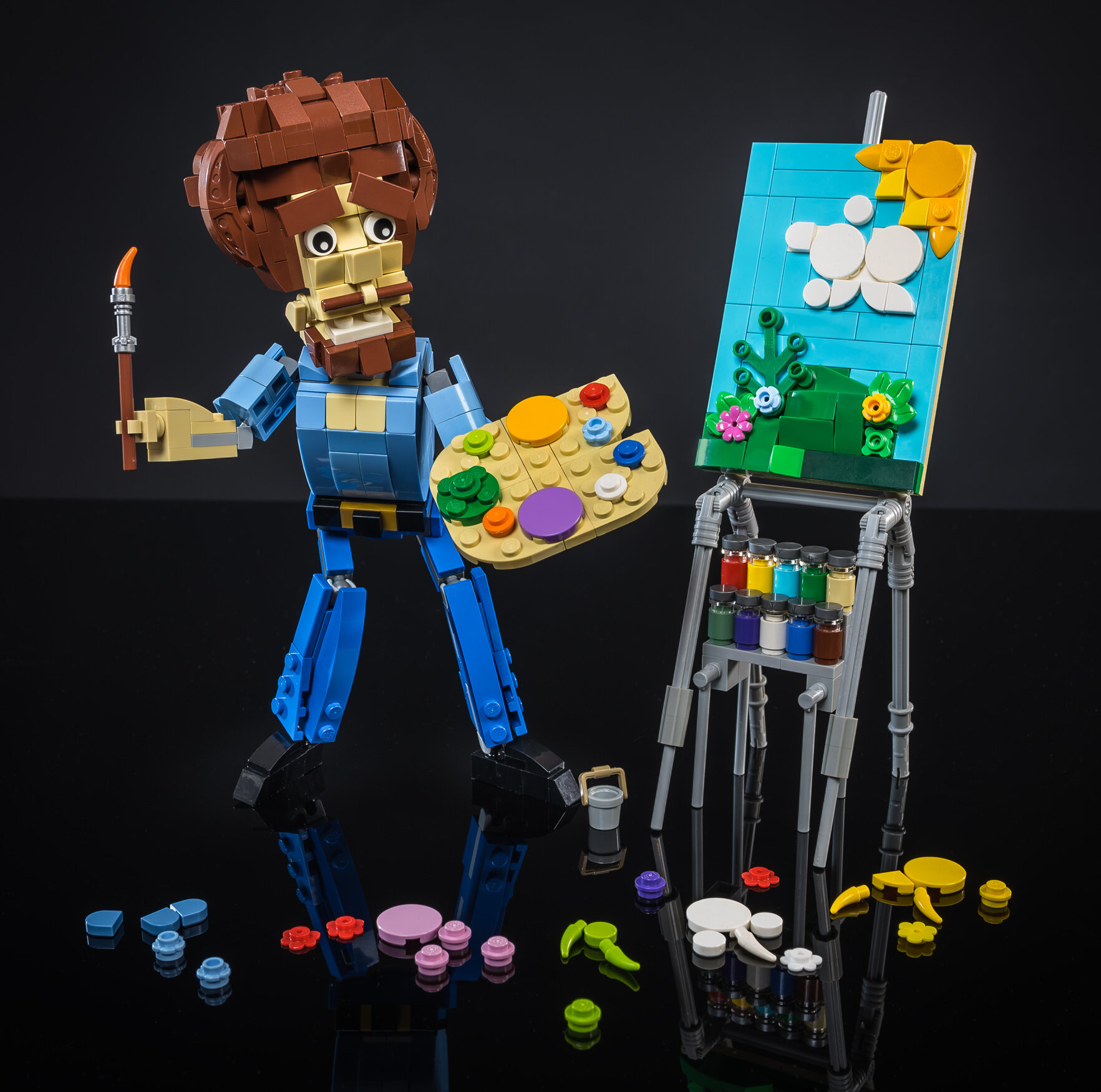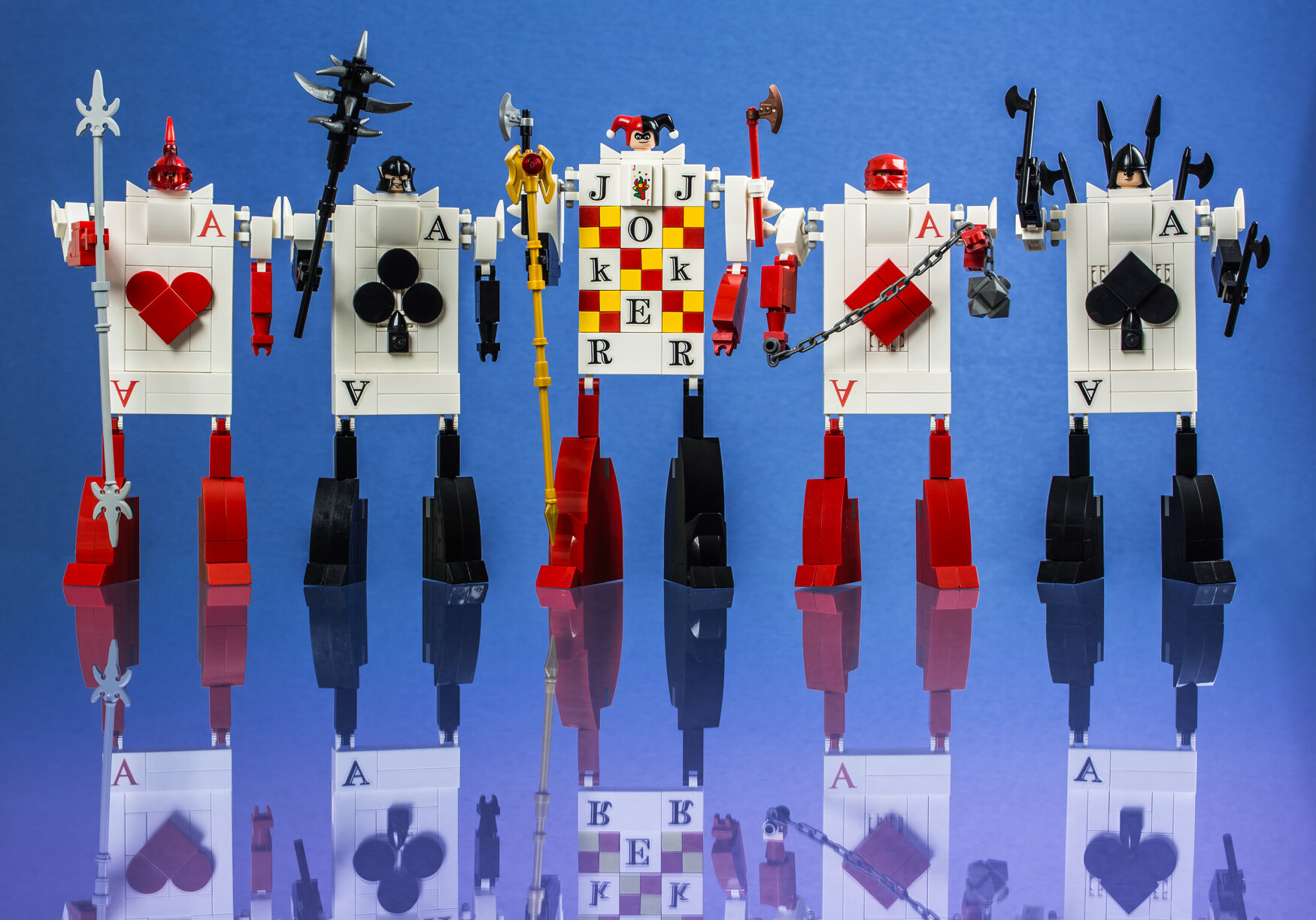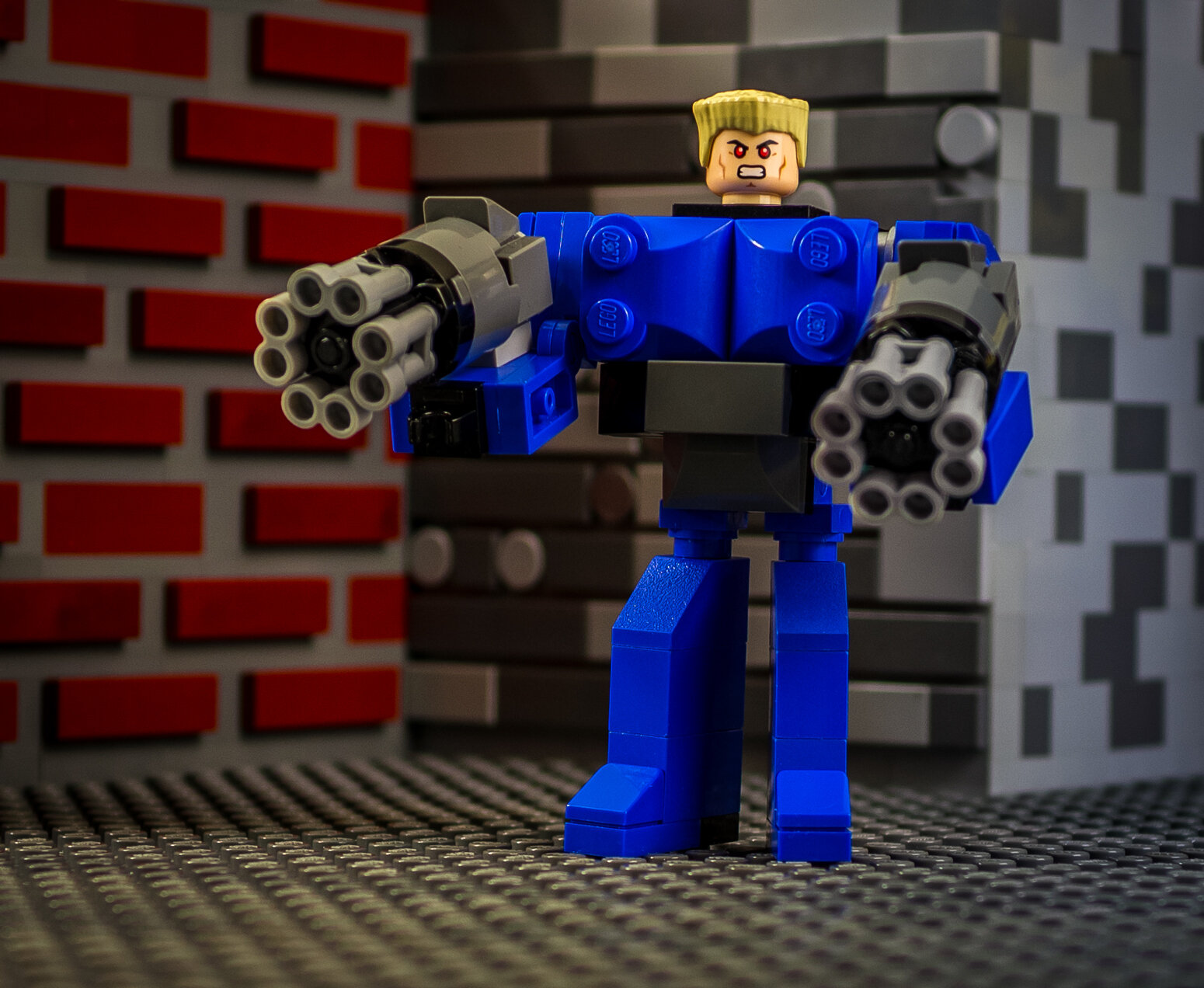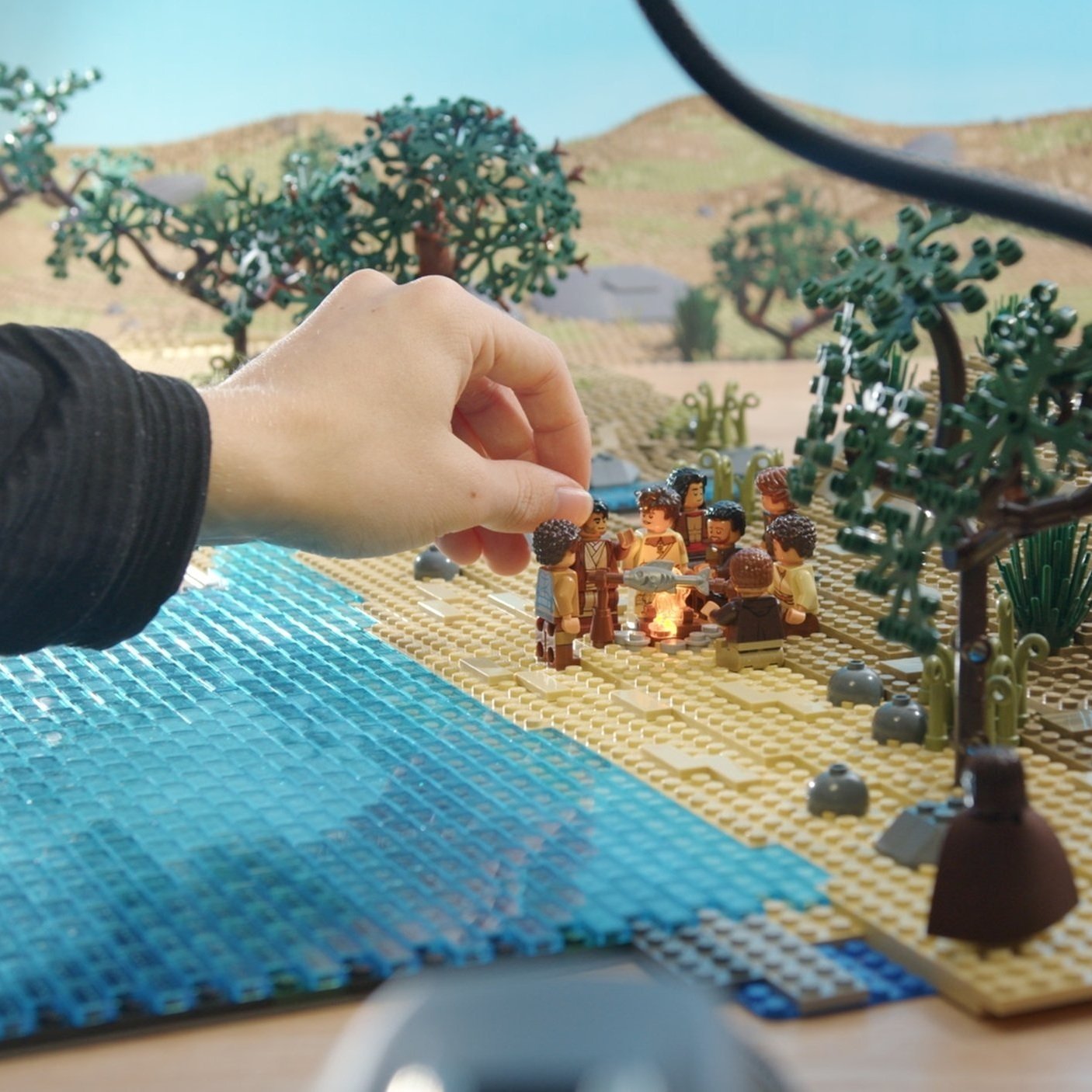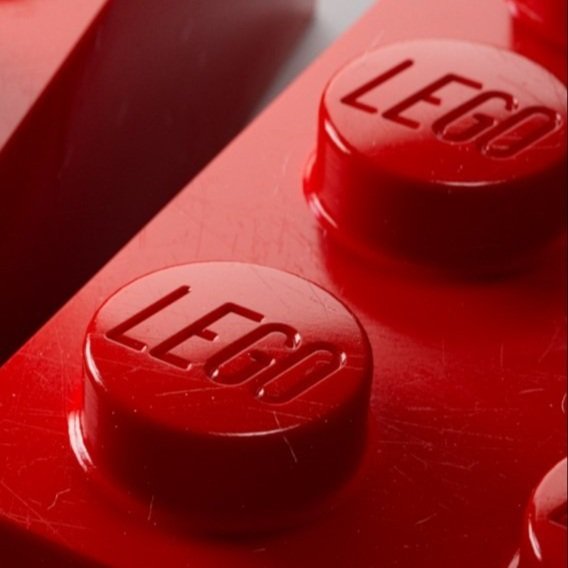Creating Character: An Interview with Baron Julius von Brunk
/Best of BrickNerd: Weekend Highlight — Article originally published June 16, 2021.
Fresh and unforgettable emotions—that’s the trophy we get as we admire the showpieces in any museum of art. In a gallery of LEGO, the same “WOW” effect is achieved when the bright and thought-provoking creations of brick make us feel surprised and totally focused on the builder’s unusual inner world of the mind.
Today, those strong impressions are nearly guaranteed! Ladies and gentlemen, meet Baron Julius von Brunk, a multimedia LEGO artist who is the featured guest of our BrickNerd community today. Prepare to take an exciting journey into his colorful imagination and find out how Baron von Brunk turns his brick-built kingdom into a real fairy tale.
Ann: Hi Julius! It is great to have an interview with such a passionate and talented LEGO builder! Before guiding us through your spectacular LEGO universe, could you tell us a bit about yourself?
Julius: I’m a mid-30s graphic designer who works in the financial industry, currently living in New York City. I was born and raised in Lancaster, Pennsylvania and grew up collecting toys like Transformers, Star Wars, and of course LEGO bricks. I’ve been building with LEGO bricks since I was a small child. Around the 2000s at the start of social media was when I began taking pictures of my creations. Now that I’ve improved my skills as a photographer, I’ve begun making stop-motion LEGO animations in recent years. I plan on eventually releasing a full feature-length brickfilm video.
Ann: How did Baron von Brunk and LEGO discover each other? How did LEGO turn into your favorite art medium?
Julius: When I was probably about three years old in the 1980s, my parents would get me various LEGO sets—notably Space and Castle themes especially. Growing up in the ‘90s, I’d spend lots of time making all sorts of original creations, including models inspired by video games—which was limited to the type of colors and pieces available at the time. Then in the 2000s when LEGO Group added lots of new colors and pieces to their catalog, it helped out with allowing me to make more elaborate and articulated builds.
Then as I moved to New York in the 2010s and pursued a career in digital arts, my skills as a photographer greatly increased, and I incorporated LEGO builds and photography into my artwork. I’ve been using a DSLR camera since 2014, and currently I own two Nikon camera models for doing all of my shots.
Ann: Could you describe your personal unique art style of LEGO creativity? How did you form and develop it?
Julius: For my unique art style with LEGO, originally I made a niche for myself by making Nintendo and SEGA-related builds, long before LEGO ever had licensed products for video game characters. Notably in late 2011/early 2012, I created some iconic Nintendo LEGO builds such as my giant Super Mario 3 airship and my Game Boy Transformer: both of these projects were featured in Nintendo Power in the May 2012 magazine issue.
From there I continued with a similar path of video game and pop culture builds, but then put emphasis on artistic photography when I began to shoot photos with a DSLR. For a little while, I did some minimal photography of shooting photos of minifigures outdoors, which I did fairly often when I used to drive a car. These were frequently shared by me on Instagram in 2015-2016 especially.
As time went on, I began to experiment with stop-motion LEGO animation, which I’ve been working on since around 2017 or so. My brickfilm animations are unique in that they often use elaborate scenes with articulated puppets, rather than simple minifigure animations.
Ann: I can see that Baron von Brunk loves to extend the boundaries of imagination and shoots stunning fairy tales. So what is your favorite brick-built story?
Julius: The story of how I built my large NES controller is an interesting and ongoing story. Suffice it to say, I was originally commissioned by the museum “Ripley’s Believe it or Not” in Times Square, NY to construct a giant LEGO sculpture of Batman’s Batmobile for a publicity stunt, but sadly the project was canceled, and I was allowed to keep all of the pieces for the project.
Instead of letting them go to waste, I decided to use them for myself and construct a large 5-foot (1.5 meter) functional sculpture of a classic Nintendo controller throughout the rest of 2012. When I released the project and its video on January 1st, 2013, the creation went viral, and I was soon contacted by Nintendo of America who commissioned me to build a store display for their Rockefeller Center flagship store for the release of a new Wii U game. I consider this event one of my greatest achievements.
In 2015 I rebuilt parts of the controller to work with computer games instead of classic NES games, and then showcased it at a video game convention to allow patrons to play it. Unfortunately it was extremely difficult to transport due its bulkiness and fragility, and was damaged severely in transit to and from the event. Subsequently I completely dismantled the whole creation and rebuilt it from the ground-up in 2016, and engineered it to disassemble into multiple units for easier transport. The current NES controller (the Mk.III edition) is now portable and can potentially be displayed somewhat easily at public events.
Ann: Your media projects are rich in eccentric and memorable characters. Who’s your favorite character in your LEGO creations?
Julius: Definitely my Alice minifigure which was used in the animations of my LEGO Alice in Wonderland video, which sadly has been stuck in production for the past few years. I’ve animated lots of footage for the video using the Alice character, but have yet to release a final project. When eventually released, I’m hoping to make the Alice character a major icon in the Baron von Brunk creative universe!
In 2016-2017 I did pre-production work for making a full LEGO Alice in Wonderland brickfilm animation, but basically bit off more than I could chew as I underestimated how difficult the project would be.
I spent months working on some of the animation and making gradual progress but was unable to focus directly on finishing it due to major obstacles in my life at the time, such as my job or my housing situation. It’s because of the sheer difficulty of this movie that I put it on hiatus in order to do smaller animations to build up my brand as an animator.
Ann: Your famous LEGO head really reinforces the idea that "YOU are what you BUILD!" This project is definitely the face of your show and a good instrument of self-expression! How did the idea of a giant brick head come into yours? :)
Julius: Thank you! To make a long story short, back in late 2015 I planned on releasing a book of photography of my best LEGO creations, and I originally built the head sculpture as the centerpiece for the front cover. In fact, my original plan was to have the book’s cover be a photo of the head sculpture being assembled by an army of astronaut minifigures.
I then began to work on the head gradually in spring 2016, and finished it surprisingly shortly. After releasing it as a project, I retooled it slightly to have the eyes blink with small LEDs when a button is pushed on the back of the head. Although I never released the book, I do plan on eventually releasing it in the near future with the head sculpture incorporated in the cover artwork.
Ann: Speaking of building, it is worth noting your incredible experience in building Nintendo Transformers!
Julius: The Transformers is one of my favorite cartoons and toy lines since I was a small child, so I definitely had plenty of knowledge of the functionality and transformation cycles with making my own custom transforming toys. A lot of my LEGO Transformers were inspired by specific Transformers toy models, notably Shockwave and Soundwave—so I’d often use their basic designs and functionality for the basis of my models.
My very first Nintendo Transformer was my orange Zapper pistol “Plasmashock” from late 2011, and from there I would only improve my skills more and more as time went on. My favorite model thus far is my Nintendo 64 “Ultra Hexacon.” At the time of this writing, I plan on soon releasing a transforming Super Nintendo within the next few months.
I started working on it last year and completed the two controllers and the game cartridge, but now that I’ve obtained my classic video game collection from my old storage unit, I’m going to use my real Super Nintendo as a reference model for making my SNES Transformer, in order to make it as accurate as possible.
Ann: Changing gears, I’d love to find out about the process of stop-motion animation you share on your YouTube channel. For example, your story about Shrek eating chicken nuggets is brilliantly fun!
Julius: The Shrek chicken nuggets video is definitely a weird story and one of my favorite animations, due to the sheer absurdity of it! Back in 2019, I wanted to release several small, simple animations to supplement my YouTube channel, so on a train ride home from work, I was thinking of some general ideas of quick videos to make. My train of thought somehow gave me the idea of a LEGO Shrek eating chicken nuggets, and from there I kept writing down ideas and preparing for the video.
The animation took about a month to do, since it was a very tedious process to make Shrek’s mouth move; each time I would open his mouth, I had to insert lime green LEGO pieces under the sides of his mouth to make his head stay in place. Other LEGO puppet animations of mine were more streamlined and smooth since the heads were simpler and lighter. I also spent a considerable amount of time trying to make the music at the end, since I don’t know how to play any instruments, and thus had to digitally compose the musical track with synthesizers.
To avoid wasting food, I reused the same chicken nugget for each shot of Shrek taking a bite, and would swap it out with a second chicken nugget that was chopped up in pieces. I eventually ate the remaining nuggets used for the closeup shots.
During production, I also wrote the idea for a potential sequel that I wanted to make, but sadly wasn’t able to do due to logistics issues. My sequel was planned to be called “Shrek is a Robot” in which the Shrek puppet would have a revelation that he’s a robot, and thus would tear his insides open to discover mechanical parts and wires. I had a general rough idea in my head but wasn’t able to fully bring it to life.
Ann: Speaking of wires, what inspires you for your electronic creations? How long does it take to design, light and breathe life into your ideas?
Julius: The Traffic Signal idea came to me when I was commuting on a train home from work too, and as I stared at the scrolling LED sign which displayed the train station name. I came up with the idea of making illuminated LEGO creations that used a dot matrix pattern with Technic bricks and transparent dots. I spent a considerable amount of time working on this project because at the time I knew very little about electronics and had to figure everything out one step at a time. In fact, I wasn’t able to program microchips yet nor use an Arduino, so I created the main circuit by slightly modifying a model railroad controller that I bought from a hobby website.
The mosaic Super Mario lamps were another similar project made around the same time, which employed the same basic principle of a multicolored dot matrix pattern. These lamps were a little simpler and used a basic light bulb in the center for illumination instead of a programmed circuit board. I ultimately sold most of these cube lamps at a video game convention a few years after their construction.
As for the miniature Super Mario sprites, I created those later in 2014 when my electronics skills were much stronger and thus I incorporated a small microchip circuit I created to activate the lights and sounds. I tinkered with this basic concept prior to making the sprites, and once I had a successful source code and schematic I went on to build several of these little sprites to sell at video game conventions.
Ann: How do you feel about sharing your work on social media and in the real world? Are you an active participant of LEGO conventions and exhibitions?
Julius: I generally get great feedback from people in real life. I work in an industry that requires extensive background checks, so oftentimes my employers are familiar with my online presence. It’s happened more often than not where my coworkers and supervisors at work told me they went to my YouTube channel and enjoyed my videos!
I’m somewhat introverted, so I don’t really display my creations publicly very often—but I have done it a few times in the past. Notably in spring 2013, I displayed lots of my Nintendo-LEGO creations in a glass case at Nintendo World Store in Manhattan for a release party for LEGO City: Undercover for Wii U.
A few years later I exhibited lots of my various creations at a video game convention in New Jersey and surprisingly sold a fair amount of my Nintendo creations. Not to mention I got to display my giant NES controller at a booth for people to play since I had it hooked up to a computer that played Tetris.
Ann: You have many accomplishments in the area of LEGO building and art. What are you most proud of as a recognized artist? Do you have plans or dreams for the future?
Julius: Quite frankly, my greatest achievement was having my display at Nintendo World Store in 2013. As mentioned previously, this was due to Nintendo of America contacting me in regards to my giant NES controller. What was so special about this event was that I got the chance to have my creations exhibited in their Nintendo museum’s glass case for a few months after the event ended, which solidified my spot in video game history! In fact, my legendary Game Boy Transformer was put on display in the glass case next to a real Game Boy which was damaged in an attack in the Persian Gulf War.
As for my goals, I wanted to eventually be a master model builder for The LEGO Group themselves, but I’m not entirely sure at this point—part of me might want to just do my own thing as a graphic designer and just make models and animations in my spare time. With my real-life job experience as a graphic designer with a history of working with consumer goods, I could definitely adapt well to a role with the company potentially in the future. After all, I was invited to their North American headquarters in 2015, and I definitely enjoyed my brief time visiting the company!
Ann: Could you tell us a bit about your LEGO Ideas project—an articulated Bob Ross painter?
Julius: As for the Bob Ross creation, it’s a little something I planned on incorporating into a brickfilm animation back in late 2019/early 2020, but canceled due to logistics issues and instead used it for a diorama. Then of course I submitted it to LEGO Ideas as a potential retailed set. It’s gathered some support so far, but let’s get it to 10,000 supporters in order to honor the memory of the late great Bob Ross!
Ann: What are your favorite themes of the official LEGO sets?
Julius: My favorite themes would be old Castle and Space sets, especially from the late 1980s to the mid-1990s. As a kid growing up, I played with most LEGO sets unconditionally, but I had a preference to medieval themes and futuristic sci-fi themes. Notably I liked the Futurons, Blacktron, M-Tron, Space Police, Ice Planet 2002, and Spyrius—and for Castle I liked the Forestmen, Black Knights, and Dragon Masters especially as toys. Now as an adult, I have two different minifigure tattoos on my right arm: a red Futuron astronaut, and a green Forestman archer!
Ann: Do you have any others hobbies and interests outside of LEGO?
Julius: For my other hobbies I do graphics and photography in my spare time, and I’ve been doing a lot of video work in recent years. I do some painting occasionally—in fact, I’ve even painted backgrounds for my LEGO photography. I used to build electronics a long time ago, but haven’t made any new electronics projects in a while; hopefully in the near future I’ll tinker with electronics again and perhaps make some motorized projects with lights and sound.
Ann: Huge thanks for this amazing interview, Baron von Brunk! I really enjoyed studying your incredible LEGO experiments, and it was so fun to share them in detail with the BrickNerd community!
P.S. This guy from my favorite old video game is my absolute favorite!
How would you build something that exudes character? Leave your thoughts in the comments below.
Do you want to help BrickNerd continue publishing articles like this one? Become a top patron like Charlie Stephens, Marc & Liz Puleo, Paige Mueller, Rob Klingberg from Brickstuff, John & Joshua Hanlon from Beyond the Brick, Megan Lum, and Andy Price to show your support, get early access, exclusive swag and more.




